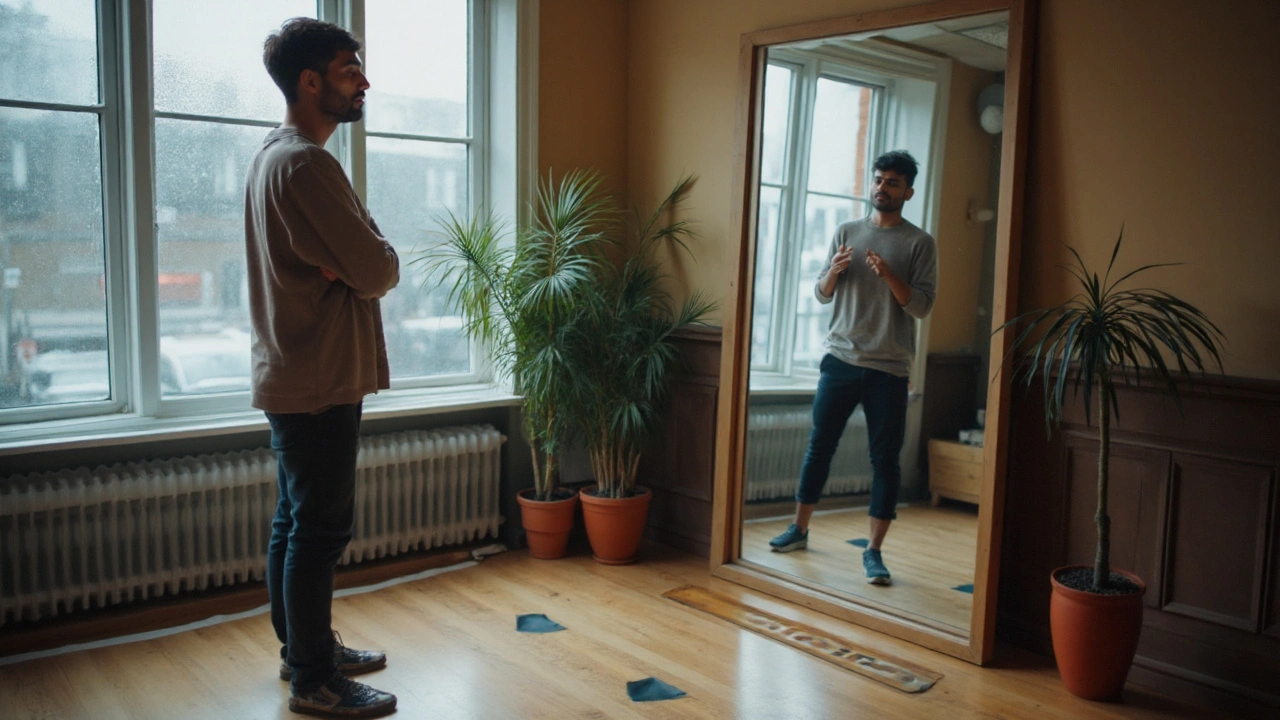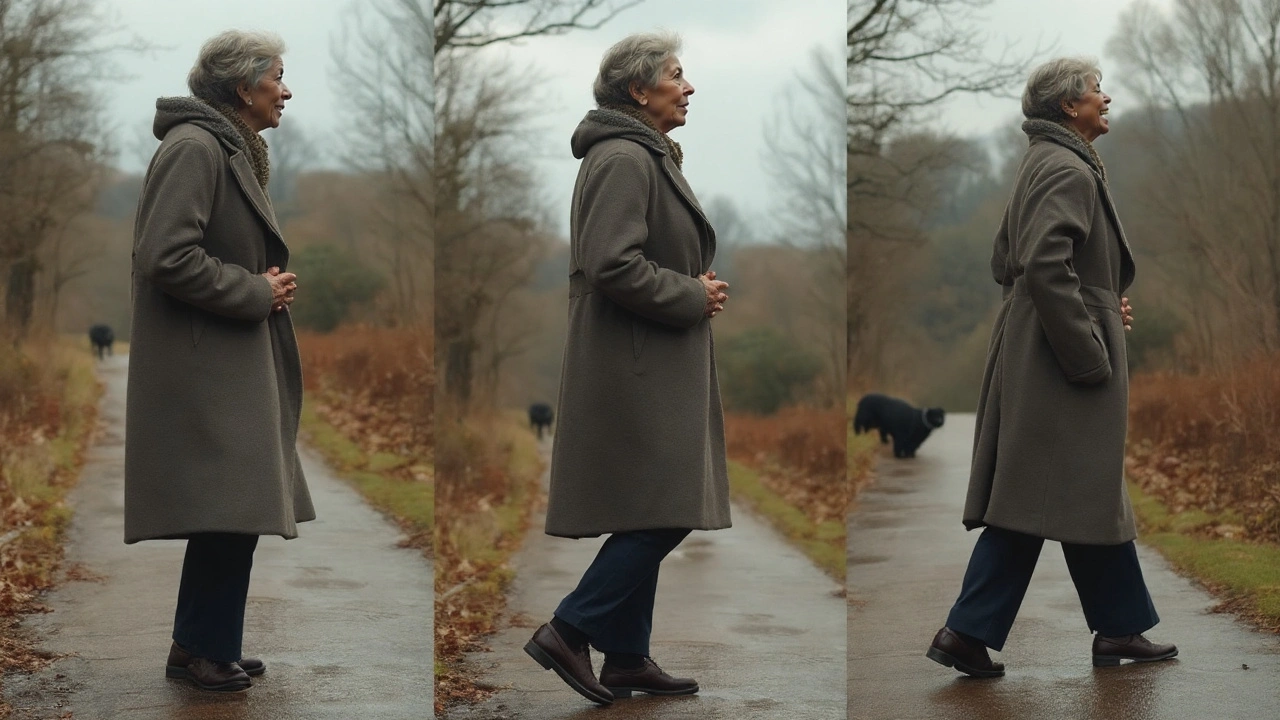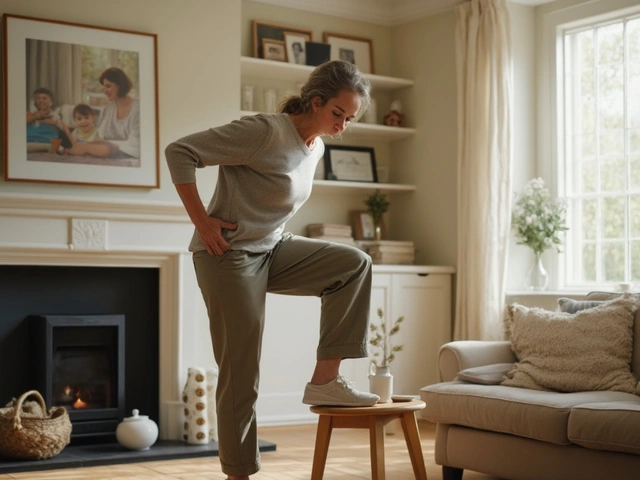How Rolfing Improves Breathing Mechanics: Diaphragm, Posture, and Rib Cage Release

Your breath shouldn’t feel like it’s fighting through a stiff jacket. If your shoulders hike with every inhale, your upper chest does all the work, or you wake tight through the ribs by mid-afternoon, you’re leaking energy on every breath. Rolfing is one of the few hands-on approaches that targets the fabric of the body-fascia-to free the rib cage and diaphragm so breathing gets easier and deeper, without forcing it.
Before we get into the how, a reality check: Rolfing isn’t magic, and it’s not a cure for medical lung conditions. But for posture-driven restriction, stressy breath patterns, and rib-cage stiffness from desk life or training, it can change the mechanics that your lungs depend on. Think more space, less fight.
- TL;DR: Rolfing reduces fascial drag around the ribs, spine, and diaphragm so breathing becomes easier, deeper, and quieter.
- What improves: rib mobility, diaphragm excursion, neck/shoulder tension, and posture that supports breath.
- What it’s not: a replacement for medical care if you have asthma/COPD-use it to optimize mechanics, not treat disease.
- Expect a series of sessions that progress from superficial breathing muscles to deeper core support and integration.
- Track progress with simple measures: breath rate, chest expansion, and how effortful your first steps in the morning feel.
How Rolfing Changes Your Breathing Mechanics
Rolfing works on fascia-the body’s three‑dimensional connective tissue network-to reduce tension lines that pull ribs inward, tilt the sternum, and lock the diaphragm. Imagine your rib cage wrapped in a slightly twisted, sticky sweater. Rolfing eases that twist so the sweater slides and your ribs can actually move.
Here are the main breathing parts Rolfers target and why it helps:
- Rib cage and intercostals: When the spaces between ribs (intercostals) are grippy, the ribs don’t swing like bucket handles. You end up chest-breathing with small, shallow volumes. Freeing the lateral ribs makes each inhale bigger with less effort.
- Sternum and costal cartilage: A rigid sternum blocks the front ribs. Gentle work along the sternum and its attachments lets the chest wall glide, not creak.
- Diaphragm attachments: The diaphragm anchors to your lower ribs, sternum, and lumbar spine. If the front ribs and upper abs are stuck, your diaphragm can’t descend well. That’s like a piston trying to move in a rusty cylinder.
- Neck and scalenes: Tight scalenes and sternocleidomastoid take over when the diaphragm is offline. Loosening them helps shift work back to the diaphragm so your neck stops doing the heavy lifting.
- Thoracic spine and viscera glide: If the mid-back can’t extend and rotate, the ribs won’t open evenly. And if the abdominal wall is braced all day, your organs can’t glide easily when the diaphragm moves. Both matter for easy breathing.
What does the evidence say? Research on Rolfing and pulmonary metrics is still small, but there are useful clues:
- Manual therapy that improves thoracic mobility increases chest expansion and reduces accessory muscle overuse, especially in desk workers and athletes (Journal of Bodywork and Movement Therapies, multiple small trials, 2014-2022).
- Myofascial interventions around the rib cage and diaphragm have shown improvements in perceived breath ease and rib excursion, even when spirometry numbers barely move-mechanics and comfort change first (case series in somatic therapy journals, 2018-2021).
- Rolfing-specific studies more often measure posture, pain, and movement efficiency; these consistently improve, which indirectly supports better breathing mechanics (Ida Rolf Institute reports and peer-reviewed movement studies, 2009-2020).
In plain terms: the lungs are fine, but the hardware that moves them is stiff. Rolfing tunes the hardware.
On a personal note, the first time I felt my side ribs actually expand was after a session focused on the left sternum and upper abdomen. Walking Scout-my beagle-along the coastline that evening, my breath felt wider, like I had extra room under the ribs. No extra effort, just space.
Step-by-Step: What Happens in a Rolfing Series for Breath
Rolfers often use a structured “10-Series” to unravel layers of tension. You don’t have to do all ten, but the early sessions are breath-focused for a reason.
- Session 1-2: Freeing the outer breath. Expect gentle work around the rib cage, sternum, back ribs, collarbones, scalenes, and upper abdomen. Goal: more chest wall glide, quieter neck.
- Session 3-4: Diaphragm and lateral lines. Work settles into the lower ribs, domes of the diaphragm (under the rib margin), and the sides of the trunk. Goal: better diaphragm descent and rib “bucket handle” movement.
- Session 5-7: Core support. Pelvis, psoas, and deep abdominal wall get attention so the diaphragm isn’t fighting a braced belly. Goal: inhale drops down; exhale has tone without gripping.
- Session 8-10: Integration. Thoracic spine rotation, walking gait, and arm swing sync with breath. Goal: breathing spreads through the whole body without hotspots.
What it feels like: slow, specific pressure and stretch, often with you taking small, comfortable breaths while the practitioner supports a rib or softens a fascial seam. It should not feel like you’re being forced to breathe a certain way. You may feel warmth, lightness, or an odd sense of space after.
How to prepare for a breath-focused session:
- Arrive slightly early so you’re not rushed; a frantic nervous system equals a tight breath.
- Skip a heavy meal in the prior hour-your diaphragm moves better when your stomach isn’t full.
- Wear soft, non-restrictive clothing. Sports bras and stretchy shorts are ideal.
Safety and who should check with a clinician first:
- Active respiratory infections, fever, or a recent rib fracture-wait until recovered/cleared.
- Unstable cardiac or pulmonary conditions-get medical guidance first.
- Pregnancy-Rolfing can be adapted, but let your practitioner know; avoid deep abdominal pressure.
- Significant reflux-positioning and timing after meals matter.
Time and cost (Australia, 2025): Sessions typically run 60-75 minutes. Fees in major cities range from AUD $130-$200 per session; packages for a 10-Series may reduce per‑session cost. Private health rebates are uncommon for Rolfing in Australia-plan to self-fund.
Results timeline: Most people feel a difference in breath ease within 1-3 sessions. Posture and gait changes tend to layer in over 4-6 sessions. If nothing changes by session three, discuss it-technique, goals, or timing may need adjusting.

Self-Tests and At-Home Techniques to Prime Your Breath
Use these quick checks to see if your mechanics are holding you back. They’re simple, safe, and good baselines before you start with a Rolfer.
Quick screens (2-3 minutes each):
- Hand scan: One hand on chest, one on belly. Inhale quietly through the nose. Does the upper hand pop first? That’s upper-chest bias. Aim for belly-first-with-lateral-ribs, chest last.
- Rib tape measure: Wrap a soft tape around your chest at nipple line (men) or just below bra line (women). Max inhale minus max exhale equals chest expansion. Many adults sit between 3-7 cm. If you’re at 1-2 cm, your rib cage is likely stiff.
- Breath rate: Sit, nose-breathe for a minute. Count breaths. Resting 8-14/min is common in relaxed adults. If you’re 18-22/min at rest, you may be over-breathing or using accessory muscles.
- Neck noise check: Inhale gently and feel the scalenes (sides of the neck). If they jump on every breath, the diaphragm needs help.
At-home techniques that pair nicely with Rolfing:
- Crocodile breathing: Lie prone, forehead on hands. Nose-breathe. Send the breath into the low ribs and belly into the floor. 5 minutes. This loads the diaphragm without neck compensation.
- Side-lying rib wave: Lie on your right side with knees bent. Left hand on left lower ribs. Inhale into your left side as if widening your waist; exhale and gently traction the ribs down and back. 8-10 breaths each side.
- Towel wrap: Wrap a yoga strap or towel around the lower ribs, cross in front, hold ends. Inhale against the strap sideways and back, not up. 2 minutes to teach lateral expansion.
- Ball release for pec minor: Place a soft ball against the upper chest (just below the collarbone, outside the breastbone). Lean into a wall and breathe slowly for 60-90 seconds. This frees the front-rib attachments without poking the ribs directly.
- Thoracic “open book”: Side-lying, knees stacked, arms straight out in front. Rotate top arm back, opening the chest, eyes follow the hand. 6-8 slow reps per side. Stay under pain.
Rules of thumb:
- If your shoulders lift before the ribs widen, slow down and reduce volume. Quiet is quality.
- Two sets of 2-5 minutes sprinkled through the day beat one marathon session.
- Discomfort at the skin or muscle is okay; sharp rib or spine pain is not. Stop and adjust.
Track what matters. Use the table below as a simple reference for norms and signals of change.
| Metric | How to Measure | Typical Resting Range | What Improvement Looks Like | Notes |
|---|---|---|---|---|
| Breath rate | Count for 60s at rest, nose-breathing | 8-14 breaths/min | Lower rate with same or better comfort | Higher rates suggest over-breathing or stress |
| Chest expansion | Tape measure at mid-chest, max in vs. max out | 3-7 cm | +1-3 cm over weeks | Big jumps are rare; steadiness matters more |
| Perceived effort | 0-10 scale while walking at normal pace | 3-4/10 | 1-2 points lower | Subjective, but useful for daily function |
| Neck involvement | Palpate scalenes during 10 slow breaths | Minimal activation | Less “jumping” in the neck | Accessory muscles quiet as diaphragm takes over |
Evidence corner: Normal adult chest expansion often sits around 3-7 cm; resting respiratory rate commonly lands near 12/min in relaxed adults. Diaphragm excursion on ultrasound ranges widely, but the trend with better mechanics is more even rib motion and reduced neck activity. When people report easier stairs, quieter shoulders, and smoother exhale, mechanics are improving-spirometry doesn’t always budge first.
Rolfing vs. Other Ways to Improve Breathing
Think of your options as lenses. Some focus on tissues, some on patterns, some on fitness. The right mix depends on your bottleneck.
- Rolfing: Best for structural rib/diaphragm stiffness, postural collapse, and persistent neck-driven breathing. Not for acute medical lung issues. Pairs well with breath training.
- Physiotherapy/manual therapy: Excellent if pain or joint restriction is the limiter. You’ll get mobilizations, strength, and breathing drills. Great after rib injuries or surgery (with clearance).
- Massage therapy: Good for general muscle tension and stress relief. Helpful, but usually less specific to rib mechanics than Rolfing or osteopathy.
- Osteopathy: Often blends joint, fascial, and visceral work. Useful for thoracic mobility and diaphragm release, similar territory with a different framework.
- Breathwork (Buteyko, pranayama, clinical breathing rehab): Best for CO2 tolerance, rhythm, and nose-breathing habits. If your mechanics are rigid, pair this with hands-on work.
- Strength and mobility (yoga, Pilates, thoracic mobility work): The “use it” side. Once you gain motion, you have to keep it by moving well.
Choosing a path:
- If you feel stiff and braced even at rest, start with tissue mechanics (Rolfing/osteopathy), then add breath training.
- If you can move well but gas out fast, add breathwork and aerobic base.
- If pain blocks breath, prioritize assessment and targeted rehab.
What about results? Hands-on work usually shifts comfort and mechanics quickly; conditioning and breath control take weeks. Many clients do 3-6 Rolfing sessions, then switch to home practice to lock in gains.

FAQ and Next Steps
Quick answers to the things people ask most.
Does Rolfing hurt? You should feel engaged, not overwhelmed. A good Rolfer works at a pressure that lets your nervous system relax. Speak up; breath work needs cooperation, not gritting teeth.
How many sessions will I need? If breathing is the main goal, plan 3-6 sessions to see clear change, spaced 1-2 weeks apart. A full 10-Series helps with broader posture and long-term integration.
Can it help asthma? It won’t treat airway inflammation, but many people with well-managed asthma report easier mechanics, less neck tension, and better recovery between bouts. Coordinate with your clinician and keep your meds plan.
Is it safe during pregnancy? Yes, with modifications. Practitioners avoid deep abdominal work and position you for comfort. Tell your Rolfer which trimester you’re in.
What lasts and what fades? Tissue glide often holds if you move well daily. Neck tension creeps back with long laptop hours, stress, and mouth breathing. Maintenance sessions every 4-8 weeks can help if your workload is heavy.
How do I find a qualified practitioner? Look for “Certified Rolfer” or “Certified Advanced Rolfer” trained by the Dr. Ida Rolf Institute or equivalent. Ask about experience with breath work, not just general structural sessions. Good signs: they assess your breath quietly, look at your posture head-to-toe, and explain what they’re doing.
What should I feel after? Common: more space around the lower ribs, a longer exhale, less urge to sigh, and a relaxed jaw. Temporary soreness like you did a deep stretch is normal. Sharp pain is not-report it.
Next steps if you’re ready to act:
- Baseline yourself today: breath rate, chest expansion, and perceived effort walking a flight of stairs.
- Book 1-3 sessions focused on ribs, sternum, diaphragm, and neck. Tell your Rolfer the goal is breathing mechanics.
- Do 5 minutes of crocodile breathing daily for a week between sessions. Re-test your baseline the morning after each session.
- If nothing shifts by session three, pause and reassess. Consider physiotherapy for joint restriction or targeted breathwork if mechanics seem fine but control is off.
Troubleshooting by scenario:
- Desk athlete with tight upper back: Add two “open book” sets daily and use a lumbar support. Nudge your screen up; the head jutting forward keeps your scalenes on high alert.
- Runner who can’t catch breath on hills: Work lower ribs and hip flexors in sessions, then train nose-inhale/mouth-exhale at an easy pace. Build zone 2 volume before chasing intervals.
- Singer or wind musician: Ask for gentle sternum and costal cartilage work and neck de‑tension. Pair with long, quiet nasal inhales and controlled 6-8 second exhales.
- Anxious breather with fast rate: Start with slow, smaller breaths to calm the system. If palpation ramps anxiety, keep hands lighter and use more positioning and movement.
If you’re on the fence, try this: measure your chest expansion, do 10 minutes of side-lying rib waves and crocodile breathing, then re-measure. If you gain even 0.5-1 cm and feel calmer, your mechanics are trainable. That’s exactly where Rolfing shines-making space so your breath can do what it’s meant to do.





